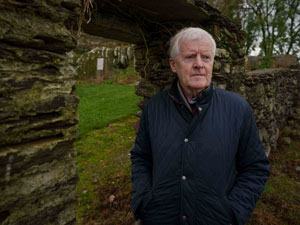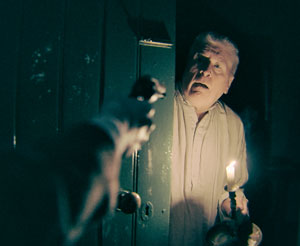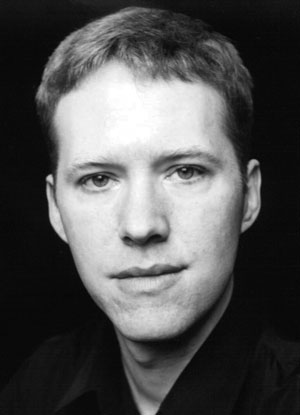MARÚ IN IARTHAR CHORCAÍ (MURDER IN WEST CORK)
Published in Issue 1 (January/February 2023), Reviews, Volume 31TG4, 7 December 2022
Laravoulta Pictures
By Sylvie Kleinman
This deeply thought-provoking and truly historical programme opens with brutal re-enactments: unarmed males are neutralised at close range in indoor settings, their homes, in the dead of night. We are in the now infamous Bandon Valley region of West Cork, where over the course of three nights in late April 1922, in unauthorised attacks by local anti-Treaty IRA men, thirteen Protestant civilians were murdered. The title employs this precise verb and the acts are later qualified as ‘horrific’: there is no obfuscation on this dimension. The narrative expands and weaves in and out of contentious interpretations of the event stemming from the sensational provocations of the late Peter Hart, the first to write about the episode. The seasoned presenter/producer Jerry O’Callaghan (a native of the locality) assures viewers that questions arising out of Hart’s interrogative framework will be addressed. Hart had proclaimed these killings to be outright ‘sectarian’, an ‘open challenge to the heroism surrounding the Irish Revolution’.
The obvious national context of the killings was the truce before the Civil War. Locally, an intense intelligence war was raging between Crown forces and the local anti-Treaty IRA brigade. The killings seem to have been reprisals for the shooting dead of Michael O’Neill, acting commandant of the 1st (Bandon) Battalion, Cork No. 3 IRA Brigade. Purportedly out in the night to requisition a car from a unionist family, he broke in when the door was not opened and was shot dead. IRA men later returned, dragged three men out of this house, killed them and buried them locally. Quite unusually for this period, however, more murders followed after O’Neill’s funeral. This has since been analysed and deconstructed at voluminous length with greater reserve and objectivity, adding insights from sources since released. Abundant reading is available online, testifying to the outreach turn in what is now far more public and less élitist Irish historical debate. All pivots around the judicious interpretation of sources, and we hear from specialists Andy Bielenberg and John Borgonovo. Had the victims, for example, defied IRA boycotts, been listed as suspected of supplying information to the enemy, been seen drinking with a Black-and-Tan or simply been ‘Free-staters’? Although not seemingly selected at random, some of the victims had been ‘killed in lieu of the original target’, like a sixteen-year-old son or the disabled 82-year-old James Greenfield (brother and cousin to suspects). Public condemnation followed; the victims’ names were known, but never those of the perpetrators (at least publicly). A later Cumann na mBan pension application, recording surveillance of some of these men as informants, could have been a re-remembering of information long in the public domain. This was Munster plantation country: we heard of the locality’s numerous Orange lodges (1834), ‘resentment’ and land hunger (not satisfactorily developed, as elsewhere we read of seizures of ‘spy farms’), 1922 rumours of an anti-Sinn Féin league, but nothing of local daily interfaith relations, before and after (if any).

Above: Presenter/producer (along with Michael Heney) Jerry O’Callaghan, a native of the locality. (Laravoulta Pictures)
From the micro-local, a broader and longer story unfolded, as Hart had projected his theories onto a longer macro-history, a hazardous enterprise unaided by his extreme claims. Resting on often erroneous and/or manipulative interpretations of data, this was duly addressed. O’Callaghan had secured Hart’s final interview: he was brusquely challenged for widening his ‘attack’ from his ‘sectarian take’ on the murders, equating the so-called ‘mass exodus’ of southern Protestants to ‘ethnic cleansing’ in Bosnia and categorising the ‘nationalist revolution’ as a sectarian one. The Cork killings could thus not be deemed isolated events. The first comparison was swiftly dealt with as ‘outrageous’; Hart’s penchant for sensational language led him to retract this in print by 2003, and here on screen, but he began publishing when Northern Ireland was ‘on a knife edge’ at the close of the Peace Process and constructed an ‘ethnic conflict thesis’, as ‘some extreme sectarian violence’ was occurring. Had the Old IRA been sanitised in heroic nation-building narratives? For Diarmuid Ferriter, shifting contexts should make us wary of direct comparisons. To some, the old brigades had greater legitimacy than the IRA in the more recent Troubles—those ‘mad Provos’, as Danny Morrison put it, for whom it was uncomplicated: they had both been fighting the same struggle. Gusty Spence acknowledged the ‘exorcising’ of aspects ‘of the past’.
We end in a post-Hart era, possibly as debate-provoking, though that can only be healthy. Framed are multiple, compelling, slightly entangled and partially inconclusive arguments, e.g. about competing interpretations of foundational narratives and visions of the recent past. The battle line of revisionism was drawn, but some reflection was merited on the genre of Tom Barry’s Guerilla days, self-writing for the fatherland in the days before (supposedly) objective and nuanced source-based factual reconstructions of the past. We sensed the historian’s attachment to written sources, and heard from descendants of the victims: nothing had ever been discussed, but this memory blur defines many—if not all—of the major conflicts of the twentieth century and left a vacuum of insights on which to build history. The ambit of academic historians and the weight of their views on sectarian violence around the Good Friday Agreement were discussed. We were reminded, though, how visually and immediately the brutality of the Troubles had been visualised for all on TV.
The film ends on a touching poetic note (John Hewitt’s The Colony), a subtle statement on the indisputable future of Protestants on this island, against views of rolling fields, tilled by both faiths for centuries. Nevertheless, when addressing southern Protestant demographics after 1922, not a single word was uttered about how welcome they were made to feel in the post-colonial theocracy, or the crushing weight of Catholicity as the supreme identifier of Irishness. ‘War’ violence was the sole prism through which sectarianism was interrogated, yet we now have a less grim ‘Protestant and Irish’ paradigm (stretching way beyond the Orange Order).
In the pursuit of objectivity, perhaps too many views were trawled. Chopped sound bites also tend to unwillingly shape categorical black-and-white explanations of history. Some seemed offended by the sectarian argument. Today both our societal values and our laws proscribe discrimination, but many mind-sets in 1922 were rooted in enmity, in a brutalised age. A quick-fire exchange about heroism and violence is not the only strand meriting a dedicated documentary. Very lengthy, densely packed, possibly slightly over-ambitious, this film comprehensively covers the ‘war of words’ raging for two decades over the Hart controversy. It documents the time-line and nature of the responses to his now partially or totally rejected statements, and visualises them for a general public.
Sylvie Kleinman is Visiting Research Fellow at the Department of History, Trinity College Dublin.
A History Ireland Hedge School and the programme itself, with presenter Jerry O’Callaghan, Brian Hanley, Simon Kingston and Eve Morrison, are available here: https://www.historyireland.com/hedge-schools/.


















